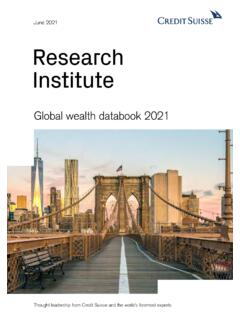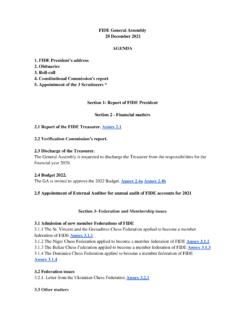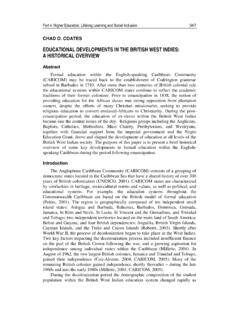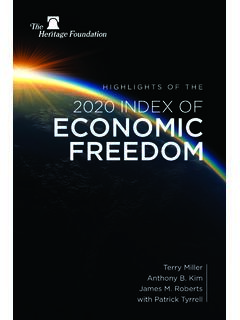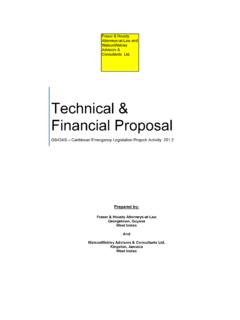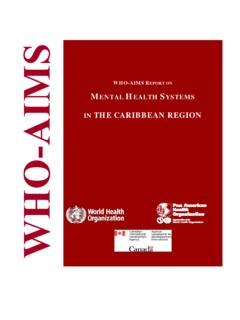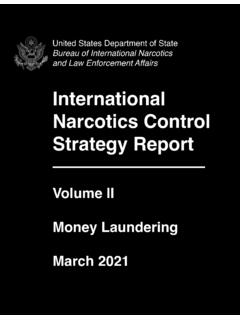Transcription of Challenges and Solutions of Higher Education in the ...
1 International Journal of Higher Education Vol. 6, No. 1; 2017 Published by Sciedu Press 169 ISSN 1927-6044 E-ISSN 1927-6052 Challenges and Solutions of Higher Education in the Eastern Caribbean States Raffie A. Browne1 & Hong Shen1 1 School of Education , Huazhong University of Science and Technology, Wuhan, China Correspondence: Hong Shen, School of Education , Huazhong University of Science and Technology, #1037 Luoyu Road, Wuhan 430074, Tel: 86-135-5417-1616 Received: November 28, 2016 Accepted: December 23, 2016 Online Published: January 3, 2017 URL.
2 Abstract Higher Education is considered as one of the most essential factors in influencing societal changes, due to its ability to help formulate good decision making in every sphere of modern society, in businesses, Education , politics and science. Higher Education over the years has significantly increased, thus given rise to many opportunities for those who pursue it. The Caribbean students, like the rest of the world seek to benefit from Higher Education , not only for enhanced academic knowledge, but also for socio-economic development.
3 Due to its sluggish development, brittle economy and lack of natural resources the Caribbean region faces many economic Challenges in making quality Higher Education accessible to all of its occupants. The purpose of this study is to investigate and compare the Challenges of low output of Higher Education and availability of Higher Education institutions in the 21st century in the Eastern Caribbean. The study analyzed database of 37 tertiary institutions in the OECS, while using comparative approach to analyze availability and cost for Higher Education .
4 Results show that factors that are affecting Higher Education in the region are accessibility, location, quality of Education , institutional costs and unemployment of graduates. We found that increased access in Higher Education has risen tremendously due to accessibility of technology and factors like globalization, integration-networking and traveling cost. This paper suggests that collaborative approach be taken by governments of the region to increase access and funding for Higher Education through scholarships and grants.
5 Keywords: Eastern Caribbean, Higher Education , Challenges , Cost and access 1. Introduction Background The Organization of Eastern Caribbean States (OECS) came into existence on 18th June, 1981 when seven Caribbean countries Antigua and Barbuda, Montserrat, St. Christopher-Nevis, Dominica, St. Lucia, Grenada and St. vincent and the grenadines signed the Treaty of Basseterre. Later in 1995 Anguilla became a member then subsequently the British Virgin Islands then Martinique acceded on 4th February, 2015, bringing the total number to 10 countries.
6 The Governments of these islands declared that they were inspired by a common desire to strengthen the links between themselves by uniting their efforts and resources and establishing and strengthening common institutions which could serve to increase their bargaining power as regards third countries or groups of third countries. The small islands of the Caribbean have been victims of globalization for an extended period of time, causing momentous economic Challenges which in turn places a significant strain in the reform and development of Higher Education (Bacchus, 2008).
7 The geographic location of these islands play a pivotal role in the countries and the region s economy, but over the years has been seeing a tremendous increase from different professionals within the job market. Since the 1980 s the region has been facing a spurious character of economic territorialization which adversely affect developmental changes Ocampo, (2004) in Higher Education . While the Caribbean region struggle to contribute Morrison, (2014) of it gross domestic product to research and innovation, other developed economies have been dedicating at least 2%, with Japan leading the field on Within the Eastern Caribbean there are only two universities that are involved with research and innovation.
8 The University of the West Indies (UWI) which have three different locations around the region and is funded by 17 countries within the Caribbean and St. George s university, which is privately owned by international investors but is also financed by the contribution International Journal of Higher Education Vol. 6, No. 1; 2017 Published by Sciedu Press 170 ISSN 1927-6044 E-ISSN 1927-6052 of the private sector. Although these two universities are located within the Caribbean region, it is only St.
9 George s University that is actually located within the Eastern Caribbean which is the focus of this research. However, UWI has open campuses in nine of the OECS. All of these academic institutions are internationally accredited and are linked across international boundaries by a common historical tradition and culture. These institutions are connected by international knowledge network that communicates research worldwide through books, journals and increasingly, databases (Altbach, 1987). The trends which are influencing Higher Education financing outlined by Marcucci & Johnstone, (2007), are still very relevant in the Caribbean: ( a) rising unit costs of instruction; (b) increasing enrolments; (c) faltering government revenues coupled with escalating fiscal burdens associated with, for example, the public sector wage bill, and debt obligations; and (d) decentralization, devolution and deregulation which encourage the privatization of public Higher Education institutions.
10 Therefore, implementation of the strict rules and policies are one of the measurements in trying to secure persons living in the region, mainly because public financing is the exclusive method for providing post-secondary Education . The average investment as a percentage of GDP in post-secondary Education is of which only one eight is from private funds (Bloom & Hobbs, 2008). Therefore, to create a cost effective and sustainable framework to produce strong partnerships and receipt of quality Education for the national colleges there must be collaboration between UWI and the private sector.










